As someone who has been involved for over two decades, it is heartening to witness the progress Tamil language computing has achieved in recent years.
In the early decade(s) the pace of development (for Tamil) was painstakingly slow and limited to fonts and keyboards, then it just took off – coinciding with the meteoric rise of Mobile phone users in India. In the early years, the Tamil technology pioneers had to work very hard to see their language show up on the computer screen when none of the platform software vendors cared for any of the non-latin languages. Even within Tamilians, we had bitter ways over the technology standards to power Tamil which got resolved with Tamil Nadu Government’s G.O. in 2010 – looking back I am happy that I had a tiny little part in that. I remember the days when I was the Vice-Chairman and then Chairman of INFITT, a non-profit registered in California, it was tough to get the attention of American companies to implement even the basic features for Tamil – then gathering the data to convince them this market is worth their attention was next to impossible.
Today, all the five technology giants have extensive support for Tamil – Apple (iOS, Mac OS), Microsoft (Windows, Bing, Bhasha India and more), Google (Android, Google Search and more), Facebook (Tamil LUI), and, Amazon (Kindle). The journey for Tamil & other Indian languages to reach the place where the English language is in Computers today, in my opinion, is another decade away but it is sure to happen as the consumer market in India is the only one outside China that is still open for business.
Why all this preamble? It is for the arrival of Google Adsense support for Tamil, the announcement for which was made today at an event in Chennai today. For the thousands of Tamil content developers, the ability to run Tamil Ads through Google Advertising platform is significant from a monetary perspective – to me, it feels like a milestone crossed for Tamil computing ecosystem. It follows a series of products from Google that has been getting Tamil support – starting with Google Translate for Tamil, Google Voice Input for Tamil and OCR for Tamil text in Google Docs – these have been pipe dreams for a long time and was restricted to research labs of Tamil Nadu.
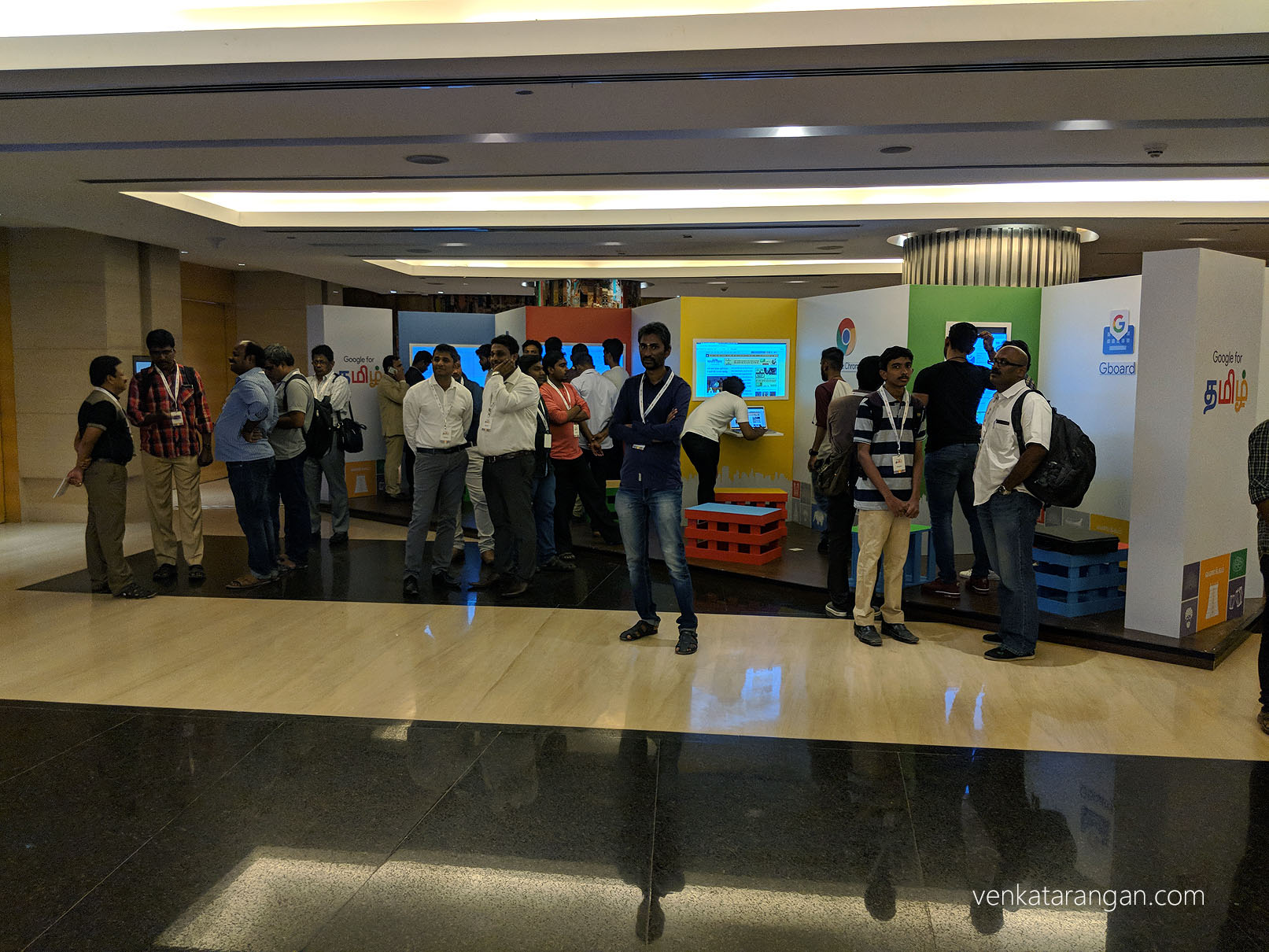
Exhibits at the event
In his keynote at the Google for Tamil event today, Jaivir Nagi, Head – Online Partnerships Business, Google India shared interesting metrics.
- The Indian Internet Userbase stands in 2016 at 170 Million for English speakers vs 234 Million for local languages. By 2021, the Indian languages users are expected to double to 536 Million whereas the userbase for English is going to plateau at 199 Million
- Digital advertisements in India is set to reach ₹30,000 crore by 2021 and local language will account for about ₹10,000 crore of that (wink, wink, the reason for the interest in this market! – I will take any support coming for my language)
- FICCI, the industry association, has set up an Indian Language Internet Alliance
- After Adsense for Hindi was introduced in 2014, Google has seen a 4 x times increase in the Hindi content
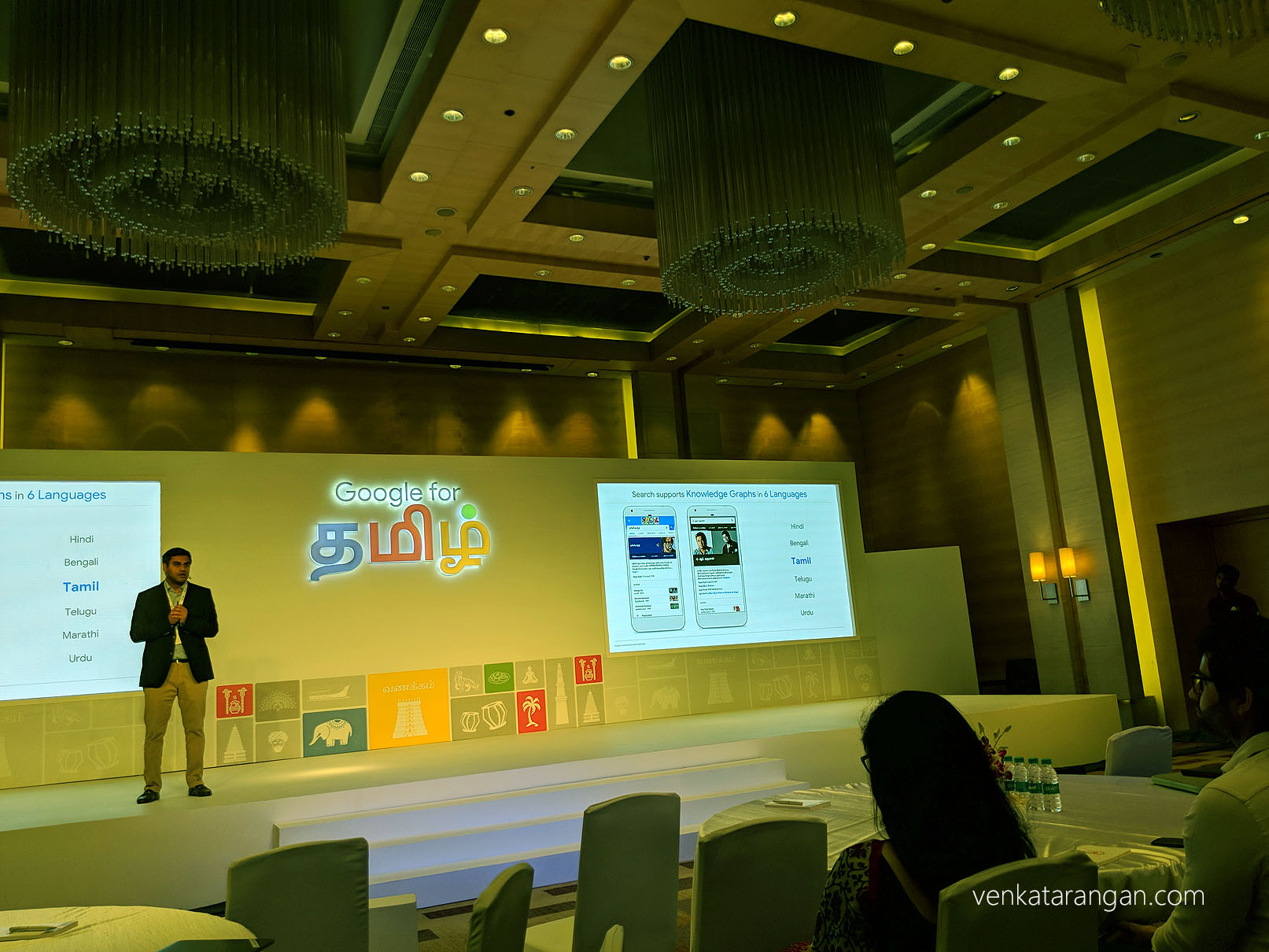
Google Search Knowledge Graphs are now in 6 Languages- Hindi, Bengali, Tamil, Telugu, Marathi & Urdu
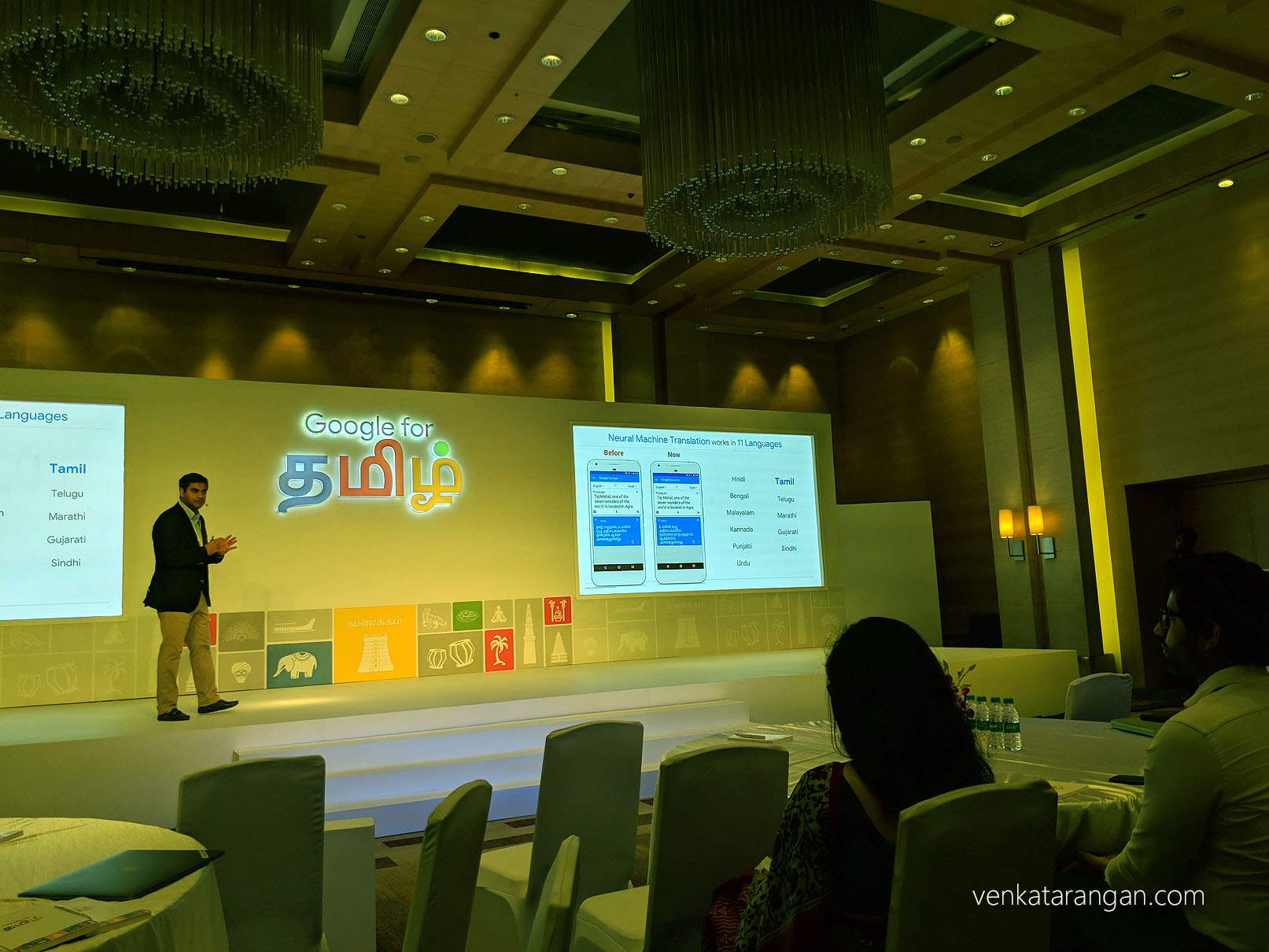
Neural Machine Translation works in 11 Languages – Hindi, Bengali, Malayalam, Kannada, Punjabi, Urdu, Tamil, Telugu, Marati, Gujarati & Sindhi
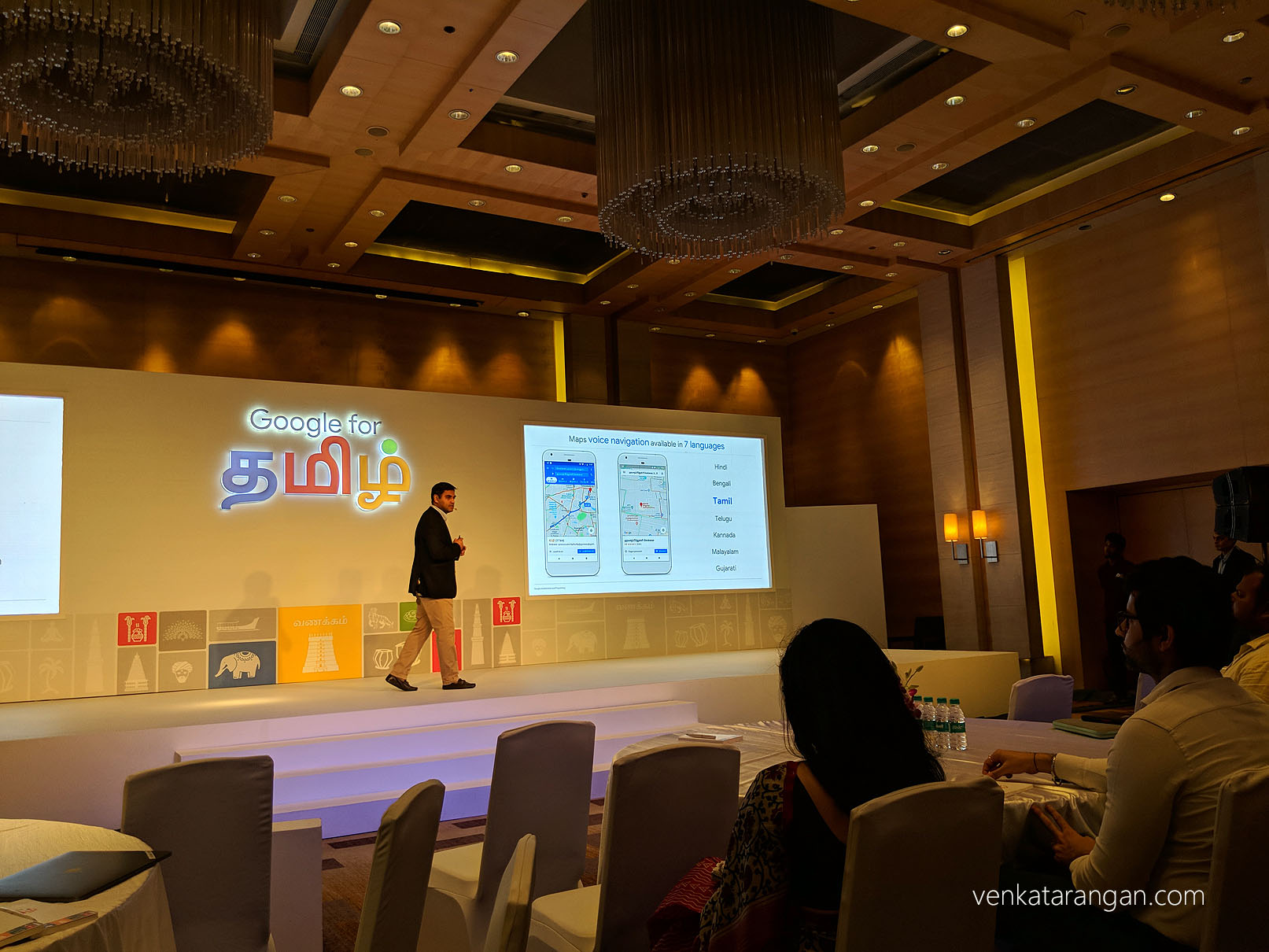
Maps voice navigation in 7 languages – Hindi, Bengali, Tamil, Telugu, Kannada, Malayalam & Gujarati
Google works with News organisation by equipping them latest tools and best practices for the digital world through News Lab programme.
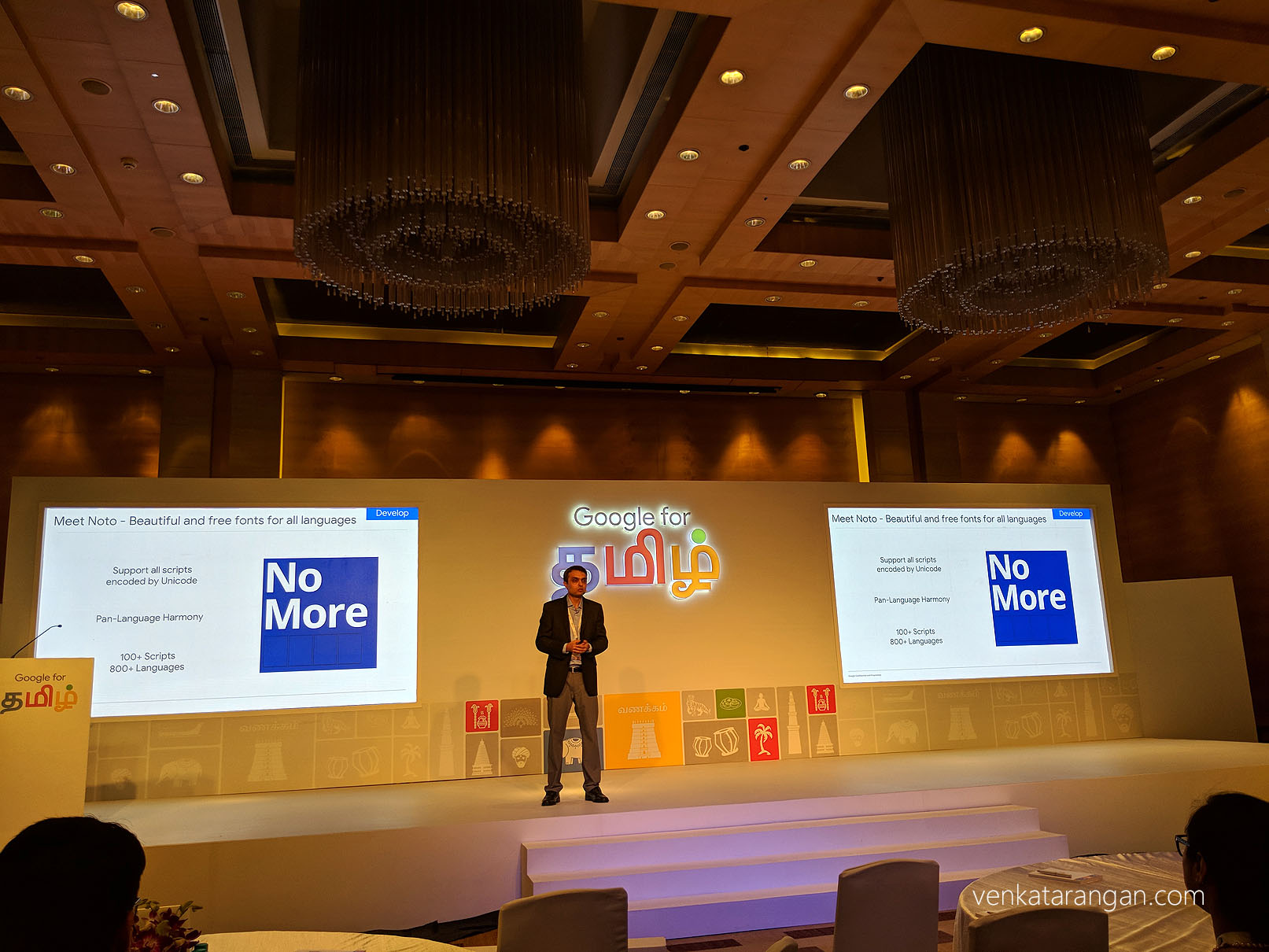
Noto – Free fonts for all languages
Google’s AMP (Accelerated Mobile Pages) helps in Speed, Engagement and Conversation.
- Typically in mobile, pages are taking over 10 seconds to load, whereas the users are expecting the load time to be less than 3 seconds and that’s where AMP comes in
- Implementing AMP has given 0% YoY increase in Traffic, 60% Page views per visit increase, and, 2 x more time spent
- There are 4B+ AMP pages today in over 25 Million domains
Users don’t look for information, nowadays, they expect it to reach them
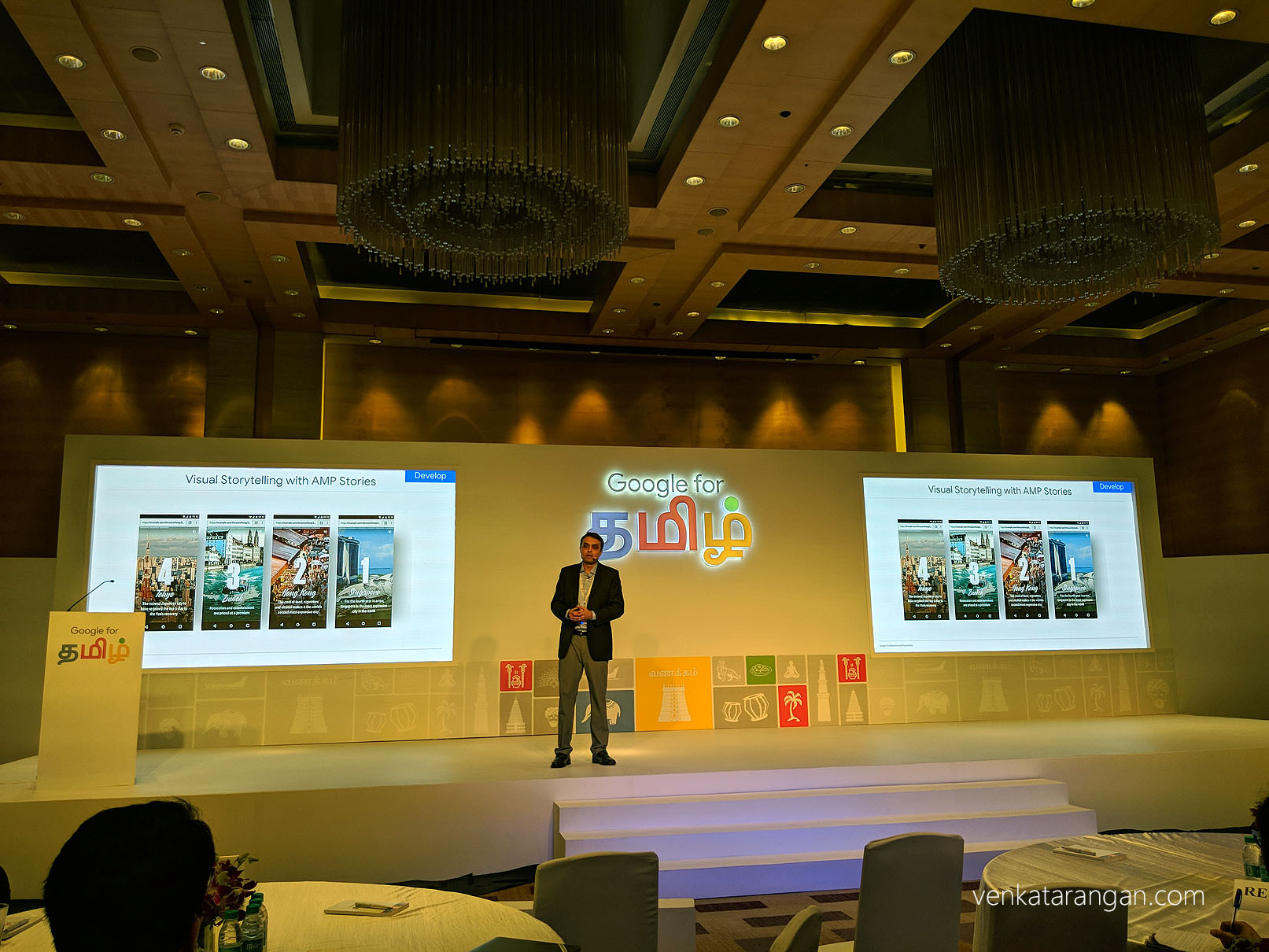
Visual Storytelling with AMP Stories – Solve the scrolling problem
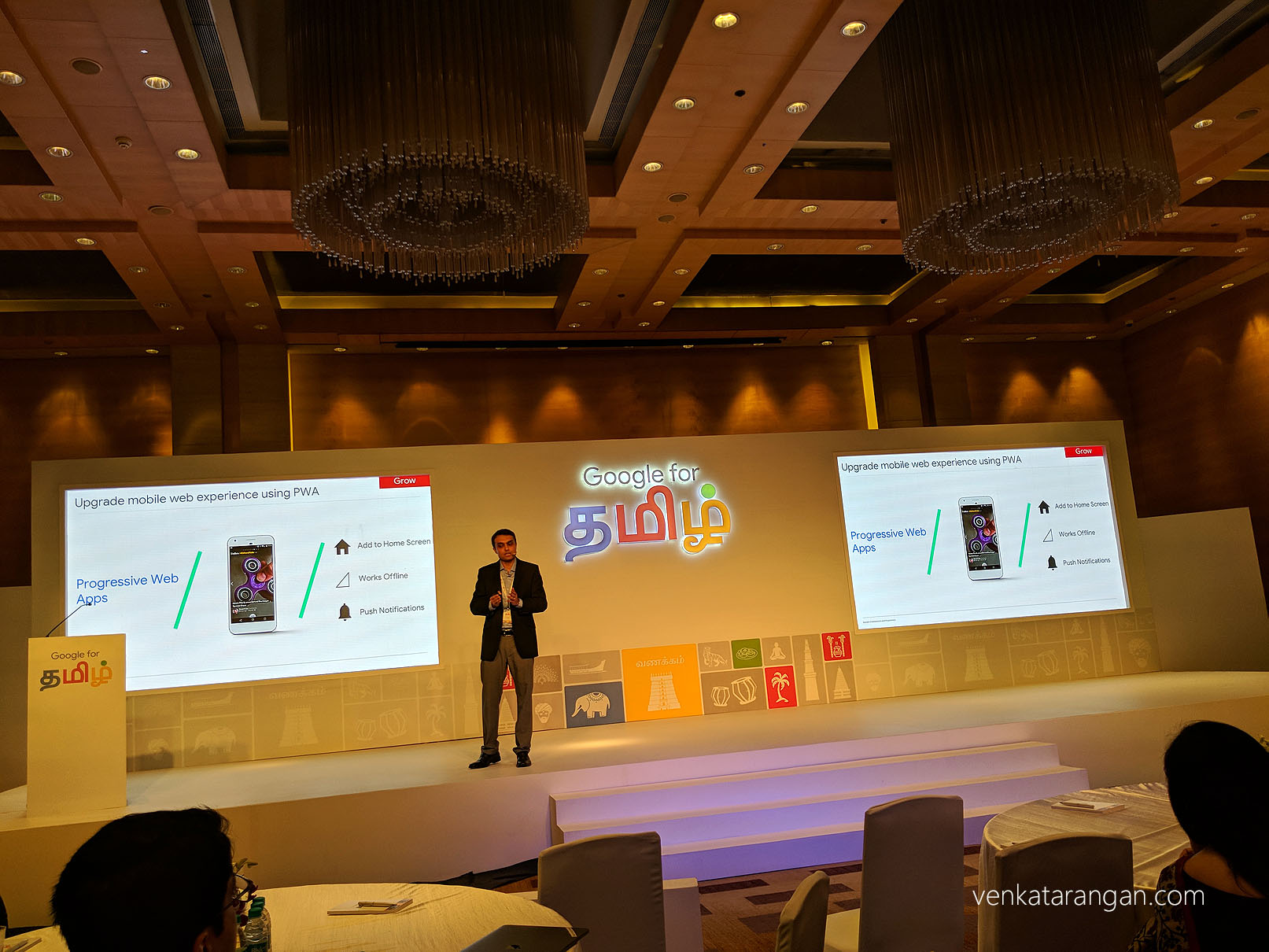
Progressive Web Apps – Add to Home screen, Works offline & Push Notifications
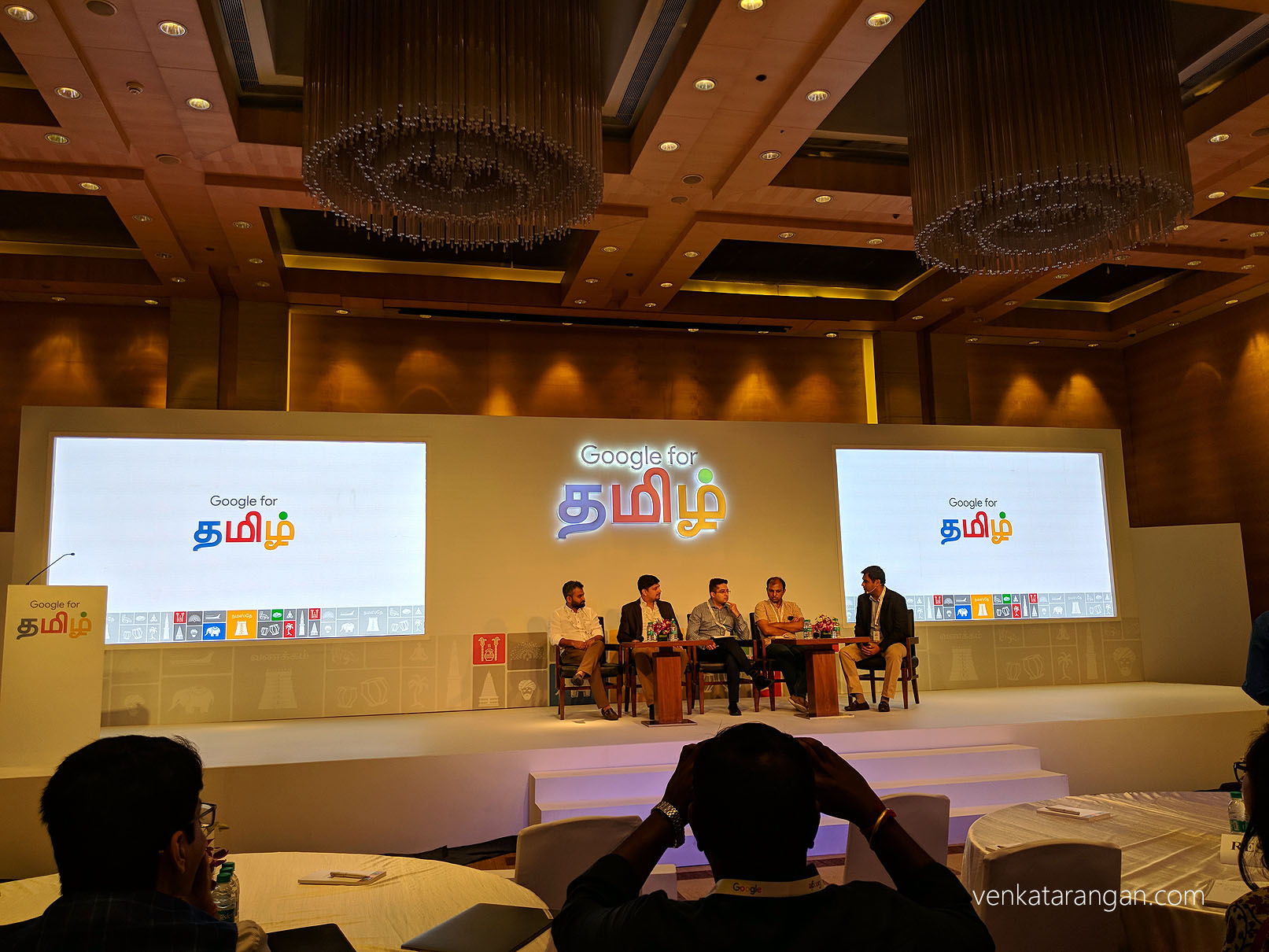
Panel Discussion – Represented by Reckitt Benckiser India, OneIndia, Readwhere, Madras Central & Google
In the panel discussion practical insights were doled out:
Reckitt Benckiser India – DettolIndia.com has now become the first local language brand site. Advertisement alone can’t be in local, then leading to an English page is disrespectful to the user. In the coming years, the engagement with local language content is expected to be much more than English. As brands, we need from technology companies more tools like Microsoft Translator and more.
OneIndia – Tamilians spent more time in comments and their interaction compared to other Indian languages. Their interest seen in the site are Politics, Movies and Lifestyle (in that order).
ReadWhere.com – Publishers are today intimidated by the complexity and plethora of technology. They don’t have dedicated technology teams to design their products. By 2021, 25 Million Tamil’s are expected to be online.
Madras Central – After Reliance Jio, the engagement and viewership have been phenomenal. From 2.5 minutes per user, the usage has increased to over 5 minutes
Post lunch, the session was on the important topic of SEO (Search Engine Optimisation) that clarified many of the myths and best practices:
- Duplicate content on the same domain is not a problem, Google understands it
- It is recommended to keep separate pages for each language – use meta tag <link rel=”alternate” hreflang=”ta” href=”https://ta.example.com/page”/>
- Three approaches for doing the above point – Responsive Web (Google recommended), Dynamic Serving or Separate URLs
- For mobile pages, implement <meta name=”viewport”>
- Use <vary: user-agent> for dynamic serving
- On your mobile pages, include <link rel=”canonical” href=”https://www.example.com” />
- Google recommends 16 points font size as the base size for mobile pages
- Google now recommends you serve to its crawler all the resources including CSS, JavaScript and Images
- Test your mobile website speed here
- Title & Description tags are still important
- There are no upper and lower word count per article
- Remember, ultimately Google considers Content to be KING
- 404 are a fact of life unless it affects user-experience you don’t need to worry about them. Over a period, Google stops crawling older 404 pages on your website
- Google algorithms are getting smarter to understand the contents of your image, but still, it is a good idea to include ALT text
- Pagerank is calculated by backlinks and the quality of links (no surprise here), but it is just 1 of the 200 signals Google search uses
- Google understands that more people are typing in the latin script (Transliteration) Tamil and other Indic language words
- Structured Data (Rich Snippets) is not one of the 200 signals but helps in your user’s experience
- Keywords in Domain Names are not a signal
- Google is working hard on understanding the Tamil Language – an important statement, that I hope will result in language tools for developers getting released by Google for overall community benefit

Google Search Best Practices
Update 20th September 2019: It is heartening to see tech giants waking up to the need of Indian Languages and doubling down to serve the next billion. Yesterday, Amazon announced their digital assistant Alexa can now understand Hindi and speak in the same language. Today, Google announced that Hindi has emerged as the second-most used language globally on its Google Assistant. I feel immensely happy with these, as any technological development that comes for one of the Indian Languages including Hindi will certainly benefit all the other Indian languages in due course, and, vice-versa.


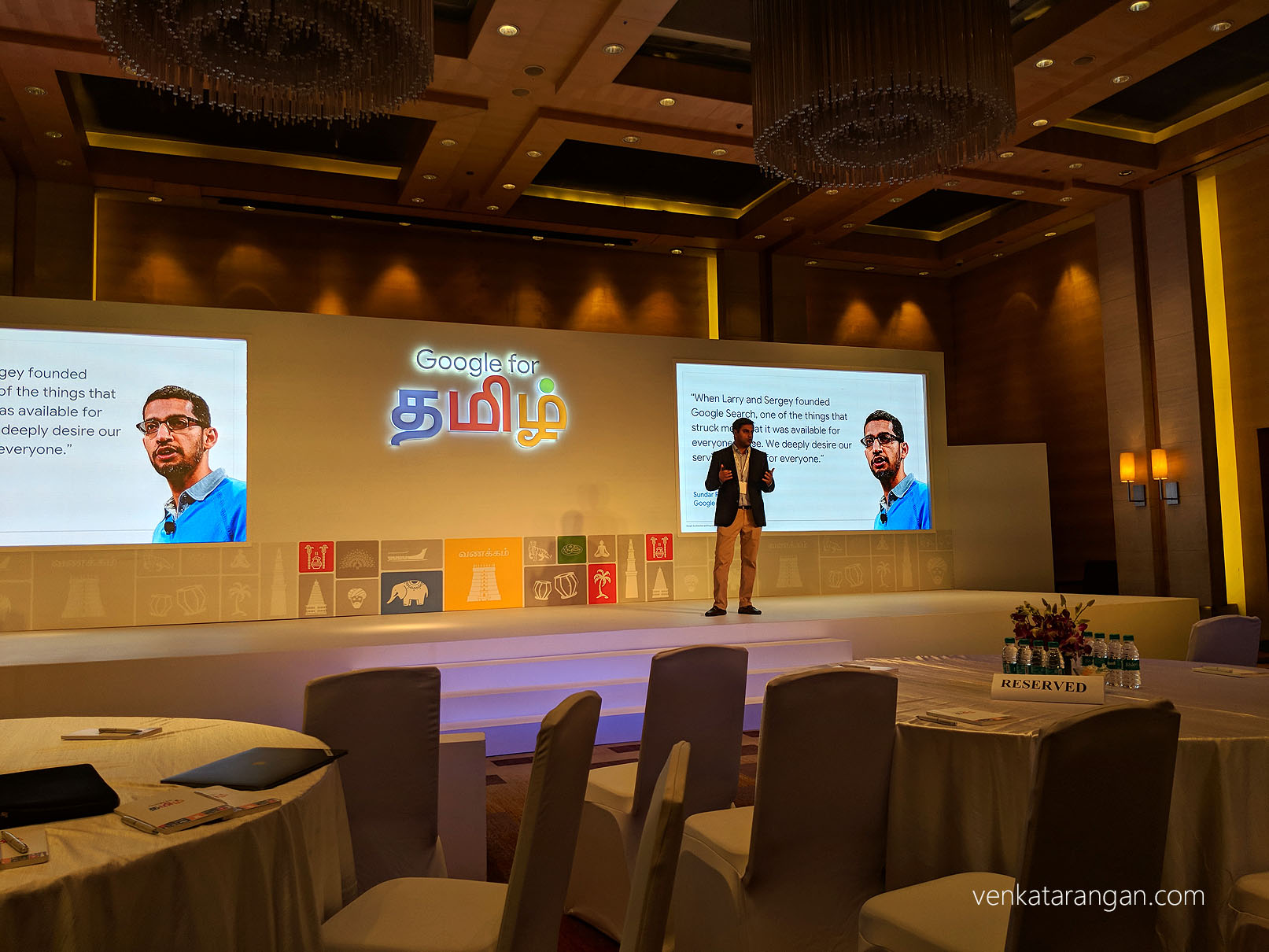
Very informative sir. Thanks